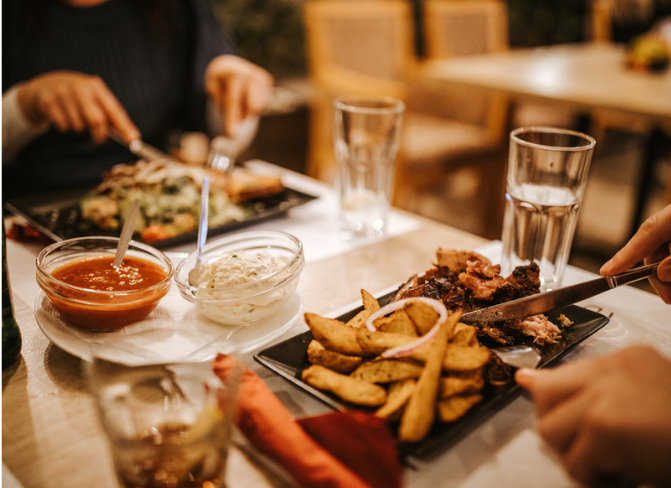Omnichannel business, a focus on operations and reasonable growth timetables set the stage for ghost kitchens’ second act.
Ghost kitchens no longer reflect their flashy name, which denotes brands or food halls that diners could only access through delivery platforms. Many major companies in the space offer omnichannel touchpoints, rendering the term “ghost kitchen” misleading, Kitchen United CEO Atul Sood said.
“I feel like it has been a misfortune to be branded as a ghost kitchen,” Sood said at a Restaurant Dive live event in September. “[Kitchen United is] not ghost kitchens, it’s something else. And in this food hall model, we need to serve consumers in multiple ways.”
The term ghost kitchen also carries some negative associations. For some consumers, the designation may be synonymous with issues around food safety and consistent service that have plagued some category operators. For restaurants, “ghost kitchen” may reflect the model’s failure to fulfill the spectacular business promises touted within the space during the COVID-19 pandemic. Companies in the segment pledged to open thousands of units, framed themselves as a lifeline for restaurants, and some even said the model was the future of fast food.
“What [was] to be a big accelerator of growth for the industry turned out to be a little bit of a false positive,” Sood said of the pandemic.
The delivery-only industry was in its nascent stages during the pandemic, but is now undergoing a process of normalization — meaning flawed concepts are changing their business models or failing — that sets the stage for broader adoption, said Rishi Nigam, CEO of virtual restaurant platform Franklin Junction.
Diners can now interact with formerly delivery-only concepts
Though Kitchen United was a ghost kitchen pioneer when it launched in 2017, Sood said its business model does not now, and never has strictly adhered to the classic definition of “ghost kitchen.” While some competitors were delivery-only, for example, Kitchen United always offered takeout kiosks for consumers.
“We’re really not [a] ghost kitchen,” Sood said. “We have 18 sites; eight of those are inside Kroger grocery stores.” At those Kroger units, which are key to the company’s ongoing growth strategy, customers can see and interact with the on-site restaurant the way they do with other brands that operate in grocery stores, like Starbucks.
“In many of [our Kroger locations] you can look into the kitchen and see the food being prepared,” Sood said. And at other locations, customers can order directly from kiosks. That touchpoint sets Kitchen United apart from classic ghost kitchens, which are only accessible to customers through digital channels.
“We have always been customer-facing,” Sood said. “We realized sooner than many in the industry that you could not operate a restaurant effectively through delivery, you needed to have the other channels, takeout — which is essentially pickup — and catering.”
One thing that has helped some ghost kitchen companies survive the rapid changes in the business environment over the last few years, according to Nigam, is leadership with deep restaurant experience.
“It’s very important that you yourself have institutional knowledge of how those businesses work, how change is implemented, the problems that you’re going to run across, the solutions that you have to implement on the fly,” Nigam said. “And those are things that are very difficult for people that have not worked in the restaurant industry.”
In the future, the ghost kitchen and virtual brand companies that focus on good operations and steady growth, Nigam said, will outperform firms that focus entirely on rapid expansion.
“It’s very, very tempting to take big investor checks and try to scale super fast. But this is not an industry that rewards speed,” Nigam said. “Slow and steady is the way to win this industry.”




